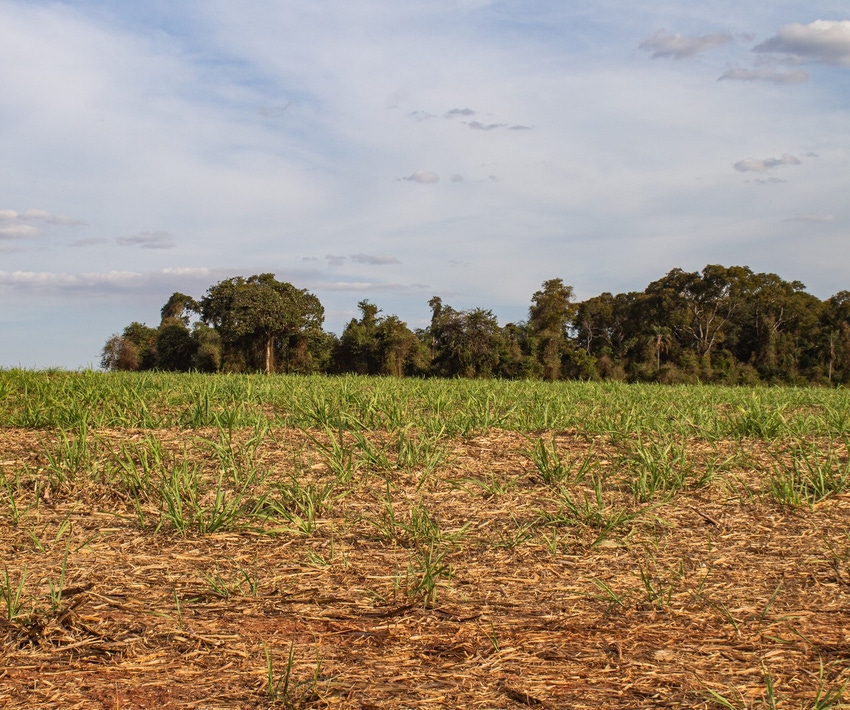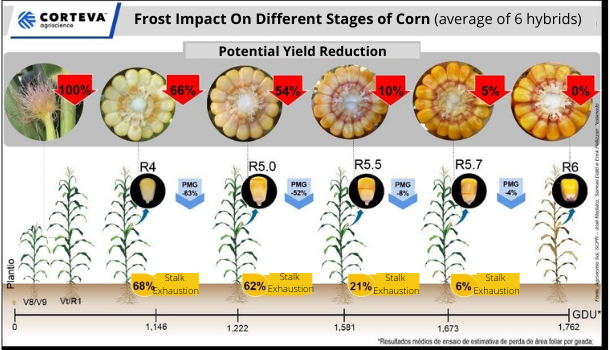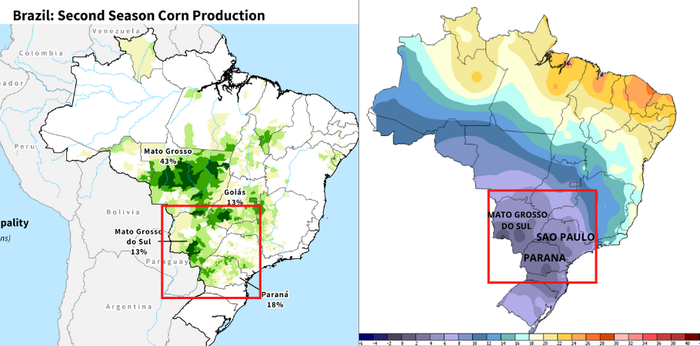
A three-day frost that took place last week in the South Western states of Brazil in Parana, Mato Grosso do Sul, Sao Paulo, Brazil, as well as Paraguay, are leading to lower corn yield projections.
Yield losses directly related to the frost are difficult to estimate, but according to Corteva, corn plants are extremely sensitive to frost, depending upon what stage they are in. Yield loss can reach as high as 66% in R4 stage. Most corn in Parana was in the R5.5 stage, where yield loss could reach 10%. Corn needs to reach R6 before it can withstand damage from frost.

Based on last season’s safrinha corn crop, 43% percent of the corn originated in Mato Grosso. This year will be over 50% as Mato Grosso has avoided most of the dry weather (but not all of it).
The frost hit roughly one-third of the safrinha production area. This would represent roughly 22 MMT of production. Therefore a 10% loss would represent a 2 MMT drop in yield due to frost. This drop is relatively modest when compared to the nearly 20 MMT drought reduction in yield from earlier this season.

Many estimates are looking for a final “safrinha” crop of 60 to 65 MMT, with the recent frost providing more emphasis on the lower end of the range. Combined with the first corn crop, final yield will land closer to 85 MMT, which is 14 MMT below the USDA’s June WASDE report. Government estimates continue to play catch up to private estimates in both the US and Brazil. The difference would make up over 500 million bushels that would leave an export gap that would provide an opportunity for the United States.
Mato Grosso reported that the corn harvest is advancing quickly, reaching nearly 25% over the holiday weekend. Overall harvest is approaching only 10%, less than half of where they were last year at this time. Traders are beginning to focus their attention on next season already, with expectations looking for 99 million acres compared to last season’s 95 million acres. Crop production should be able to easily surpass 140 MMT with some projections as high as 150 MMT if weather is favorable.
Climatologists are calling for the rainy season to begin earlier this season. Assuming that takes place, it will provide support for a larger Brazilian crop.
Matthew Kruse is President of Commstock Investments. He can be reached at [email protected]
Futures trading involves risk. The risk of loss in trading futures and/or options is substantial and each investor and/or trader must consider whether this is a suitable investment. Past performance is not indicative of future results. Trading advice is based on information taken from trades and statistical services and other sources that CommStock Investments believes to be reliable. We do not guarantee that such information is accurate or complete and it should not be relied upon as such. Trading advice reflects our good faith judgment at a specific time and is subject to change without notice. There is no guarantee that the advice we give will result in profitable trades.
About the Author(s)
You May Also Like






